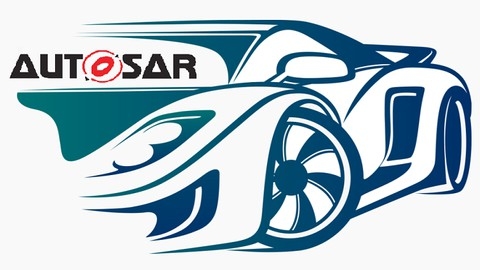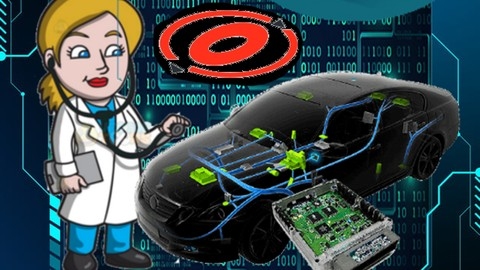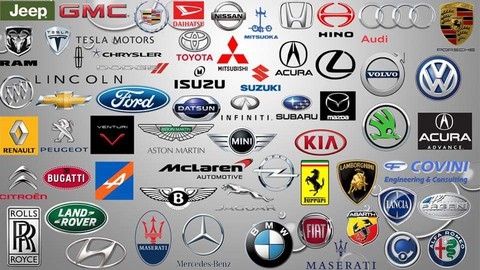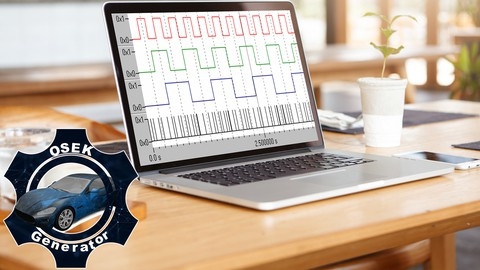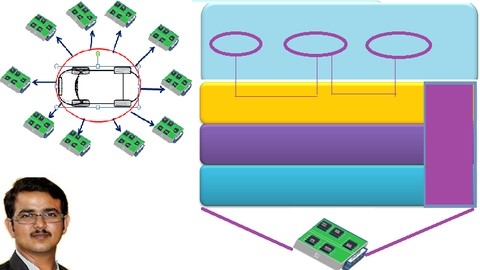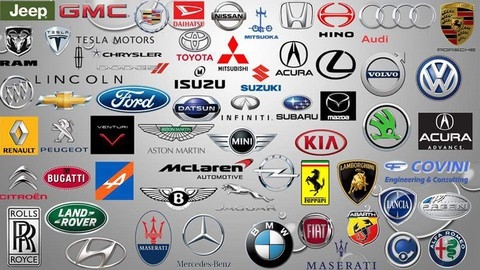AUTOSAR, or Automotive Open System Architecture, is a standardized software architecture specifically designed for automotive applications.
It aims to simplify the development process, improve software quality, and enhance reusability, leading to safer and more efficient vehicles.
Learning AUTOSAR can open doors to exciting careers in the automotive industry, allowing you to design and develop innovative software solutions for modern vehicles.
Finding the right AUTOSAR course on Udemy can be a daunting task, as there are numerous options available.
You’re looking for a course that’s comprehensive, engaging, and taught by experts, but also fits your learning style and goals.
We’ve reviewed countless courses and based on our analysis, Autosar Architecture (Learn from Scratch with Demo) is the best course on Udemy overall.
This course provides a solid foundation in AUTOSAR principles, covering everything from basic concepts to practical implementation.
The comprehensive nature of the course, coupled with the use of real-world demos, makes it an ideal choice for beginners and those seeking a deeper understanding of this essential automotive software architecture.
While this is our top pick, there are other great options available on Udemy.
Keep reading to explore our recommendations for different learning levels, including courses focused on specific AUTOSAR modules and real-world applications.
Autosar Architecture (Learn from Scratch with Demo)
You’ll start by understanding the core concepts of Autosar, exploring its purpose, and gaining insights into how to effectively learn and apply this architecture.
The course delves into the fundamental components, such as the Base Software (BSW), which handles critical tasks like communication and memory management.
You’ll gain a thorough understanding of the Application Software (ASW), focusing on how it implements vehicle-specific functions.
A key aspect of the course is the exploration of the Runtime Environment (RTE), the crucial component that bridges the BSW and ASW.
You’ll learn how the RTE facilitates communication between software components and manages task scheduling and timing.
The course further emphasizes the importance of the Autosar methodology in structuring and developing applications.
You’ll gain hands-on experience working with ARXML, the configuration language for Autosar components.
This includes practical exercises on developing the MCAL layer, which directly interacts with the ECU hardware, and the ECU Abstraction Layer, which provides a standardized interface for the ASW.
The course’s strength lies in its practical approach.
Through real-world demos, you’ll gain a deep understanding of the concepts and learn how to apply them in real-world scenarios.
This will empower you to design and develop your own Autosar applications, confidently navigating the intricacies of automotive software engineering.
Learn Autosar DCM and Diagstack from scratch
This course offers a thorough exploration of the UDS protocol and DCM framework, equipping you with the knowledge and skills needed to confidently navigate the world of automotive diagnostics with AUTOSAR.
You’ll begin with a solid grounding in UDS fundamentals, including request and response message formats and handling positive and negative responses.
The accompanying quizzes serve as valuable checkpoints, reinforcing your understanding of these essential building blocks.
Moving on to DCM and Diagstack, you’ll discover the intricacies of these powerful tools.
The course breaks down the core components – the DSL, DSD, and DSP – revealing how they collaborate within the OSI model.
You’ll gain valuable insights by working through the DCM SWS document, a crucial resource for understanding the practical application of these services.
The course then dives deep into each component, starting with the DSL.
You’ll learn about resource management, request and response handling, and the crucial role of timing parameters like P2, P2*, and S3.
You’ll also explore the configuration process using Davinci Configurator, a valuable tool for customizing your DCM system.
The DSD and DSP components are examined in a similar manner, providing a comprehensive understanding of their roles in the overall diagnostic process.
You’ll learn to configure them effectively using Davinci Configurator, further enhancing your practical skills.
Finally, you’ll witness the seamless integration of all these components in the Diagstack request-response flow, gaining a clear picture of how information flows through the system.
This culminates in a final quiz that assesses your overall grasp of DCM concepts and your ability to apply them effectively in real-world scenarios.
Learn Autosar from Scratch (Beginner to Intermediate)
You’ll begin by understanding the core principles of AUTOSAR, its purpose of standardizing and reusing software components, and how it contributes to more efficient and reliable automotive software development.
The course delves into the architecture of AUTOSAR, explaining its key layers, including the Basic Software (BSW), the Application Software (ASW), and the vital role of the Runtime Environment (RTE) in connecting software components.
You’ll gain a deep understanding of how AUTOSAR standardizes interfaces, ensuring seamless communication between components.
This course goes beyond theory, offering practical experience with AUTOSAR configuration tools.
You’ll get hands-on with industry-standard tools like DaVinci Configurator Pro, EBTresos, and an open-source tool by DD Silence.
These tools empower you to configure and manage software components within an AUTOSAR project.
You’ll also learn about the AUTOSAR System Requirements Specification (SRS) document structure, a crucial element for understanding and navigating complex automotive software projects.
AUTOSAR DIAGNOSTICS (DEM, DCM, OBD, UDS)
This course is a comprehensive dive into the world of AUTOSAR diagnostics, providing you with a thorough understanding of the underlying principles and practical applications.
You’ll gain a deep understanding of the Diagnostic Event Manager (DEM), not just as a theoretical concept, but as a critical component in managing and reporting diagnostic events within a vehicle.
The course delves into the intricate workings of DEM, covering its various aspects through nine detailed sections, each focusing on a different function and its role in ensuring proper vehicle diagnosis.
You’ll also learn how to effectively leverage the Unified Diagnostic Services (UDS) standard, as defined in ISO 14229, for communication between a diagnostic tool and the vehicle’s electronic control units (ECUs).
The course equips you with the knowledge to confidently utilize the diverse range of UDS services, enabling seamless interaction and efficient diagnostics.
The course also explores the connection between AUTOSAR and On-Board Diagnostics (OBD), ensuring you understand how to implement the ISO 15035 standard for OBD and meet emission standards.
You’ll learn how to effectively diagnose and troubleshoot potential issues, ensuring vehicles operate within regulatory requirements.
Furthermore, the course provides a comprehensive overview of the Diagnostic Communication Manager (DCM), highlighting its vital role in facilitating communication between the diagnostic tool and ECUs.
You’ll learn to effectively configure DCM using powerful tools like Canoe, understanding the crucial roles of DSL, DSD, and DSP in managing this communication.
You’ll also gain a firm grasp of Negative Response Codes (NRCs) and how they are used in diagnostics.
By completing this course, you’ll gain a robust understanding of AUTOSAR diagnostics, equipped to tackle complex diagnostic scenarios and confidently navigate the intricacies of vehicle diagnostics.
Introduction to AUTOSAR/OSEK RTOS I
You’ll gain a solid foundation in the OSEK development process and learn how to use the OIL configuration file to tailor the OSEK OS to your embedded system’s needs.
The course delves into the intricacies of task management, providing clear explanations of concepts like Task Concept and its properties, State Transitions, and OSEK Conformance Classes.
You’ll gain a practical understanding of these concepts through numerous scheduling and execution examples, allowing you to see how they apply in real-world scenarios.
The course also covers OSEK Scheduling Policies, helping you understand the different approaches and choose the best one for your projects.
Beyond task management, you’ll explore the crucial area of Resource Management.
You’ll learn about shared resources, data inconsistency problems, and how semaphores help regulate access.
The course tackles the complex issues of Priority Inversion and Deadlock, providing insights into their causes and effective solutions.
You’ll gain hands-on experience with these concepts through practical examples, including scheduling, C code implementation, and execution.
This course presents a robust learning experience, providing you with the necessary knowledge and skills to work with the OSEK OS.
Made for AUTOSAR beginners: Practical sessions with tools
You’ll delve into the intricacies of the AUTOSAR architecture, exploring the various layers from the Microcontroller Abstraction Layer (MCAL) to the Service Layer.
You’ll gain practical experience with AUTOSAR tools, learning how to create software components, add ports, and generate ARXML files.
The course also introduces you to the importance of the Runtime Environment (RTE), a critical component for enabling communication between software components.
The course starts by grounding you in the fundamentals of AUTOSAR and its role in the automotive industry.
You’ll explore the various architectures and their benefits, with a focus on how AUTOSAR streamlines the development process.
You’ll then dive into the intricacies of the CAN protocol, gaining an understanding of its role in automotive communication systems, both within and outside the AUTOSAR framework.
While the course covers essential topics, keep in mind that it doesn’t delve into BSW configuration.
This might be a consideration if you’re seeking in-depth coverage of all aspects of AUTOSAR.
However, the focus on practical exercises, using AUTOSAR tools to build and configure software components, provides a solid foundation for anyone entering the automotive software development field.
Introduction to AUTOSAR/OSEK RTOS II
This AUTOSAR course dives into the core concepts of real-time operating systems as they are applied in automotive software development.
You’ll gain practical experience through hands-on examples utilizing the OSEK operating system.
For instance, you’ll explore the differences between absolute and relative alarms, and learn to leverage the OIL (OSEK Implementation Language) to define them.
You’ll also work through examples of event control, exploring the dynamic interaction between events, the scheduler, and server tasks.
The course even introduces the powerful concept of hook routines, allowing you to execute specific code at key points in the operating system’s lifecycle.
This course provides a strong foundation in the fundamentals of OSEK RTOS, equipping you with the essential tools and knowledge for building robust automotive software.
However, remember that this course serves as a starting point.
Further exploration and practical experience will be necessary for a deep mastery of AUTOSAR/OSEK RTOS.
Embedded C and AUTOSAR Overview
You’ll begin with a strong foundation in Embedded C, covering core concepts like operators, storage classes, conditional statements, and loops.
The course emphasizes practical application by guiding you through real-world examples, such as array manipulation and memory management.
You’ll also gain hands-on experience working with pointers, structures, and unions, essential tools for building efficient and robust embedded software.
Next, you’ll delve into the intricacies of AUTOSAR, a widely adopted automotive software architecture.
You’ll explore its layered structure and learn how to configure and interact with key modules like the Runtime Environment (RTE), EcuM (ECU Management), and BSWM (Basic Software Management).
The course also examines AUTOSAR communication mechanisms, including Sender Receiver (SR) interfaces, Client-Server interfaces, and intra/inter-ECU communication.
You’ll gain a firm understanding of essential AUTOSAR components like SWCs (Software Components), compositions, ports, and connectors.
Finally, you’ll explore important AUTOSAR modules like Diagnostics (DEM), Communication (DCM), and Non-Volatile Memory (NvM).
You’ll learn the principles of diagnostics, including event processing, DTCs (Diagnostic Trouble Codes), and debouncing.
You’ll understand how to configure and manage the DCM module for handling diagnostic requests and responses.
You’ll also learn how to store and retrieve data persistently in the ECU’s memory using NvM.
The course concludes with a thorough introduction to the CAN protocol, widely used in automotive applications for communication between ECUs.
You’ll gain an understanding of CAN frame structures, arbitration, error handling, and physical layer considerations.
While the course offers a broad overview of embedded systems and AUTOSAR, it would benefit from including more specific examples, exercises, or projects to enhance hands-on learning.
Additionally, incorporating more advanced topics within each module could further deepen your understanding.
